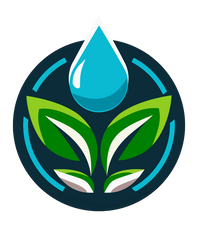Recommended Products
Welcome to UGrowFood
Your Gateway to Knowledge & Support for Hydroponic Farming in Your Home

Understanding Vapor Pressure Deficit (VPD)
A crucial piece of data you probably haven’t heard of
Who Needs to Know VPD
For those cultivating plants and aiming to maintain their health, productivity, and minimize the risk of mold, fungi, and pests, understanding Vapor Pressure Deficit (VPD) is essential.
Why Did We Make This Guide
We actively engage in various Gardyn and Hydroponic growing communities and manage our own Telegram group. Although the advice is often well-meaning, it can be misguided. Cal-Mag or Peroxide are not universal solutions. Often, the issue lies within the growing environment itself, which is actually the case most of the time.
So Why Is VPD Important and What does it do
Vapor Pressure Deficit (VPD) is crucial in hydroponics because it directly influences plant growth, nutrient uptake, and overall health. Here’s why VPD is important and what it does:
Importance of VPD
- Transpiration Control: VPD affects the rate at which plants transpire, or lose water through their leaves. Proper VPD ensures that plants transpire at an optimal rate, which is essential for nutrient uptake and cooling the plant.
- Nutrient Uptake: By regulating transpiration, VPD helps plants absorb water and nutrients more efficiently. This leads to healthier growth and higher yields.
- Stomatal Function: VPD influences the opening and closing of stomata (tiny pores on leaves). Optimal VPD ensures that stomata function properly, allowing for efficient gas exchange (CO2 uptake) and preventing water loss.
- Disease Prevention: Maintaining the right VPD can help prevent issues like mold and mildew, which thrive in environments with too high humidity.
What VPD Does
- Measures Air’s Ability to Hold Moisture: VPD is a measure of the difference between the amount of moisture in the air and the amount the air can hold when it is saturated. This helps in understanding how “thirsty” the air is, which in turn affects plant water loss.
- Balances Humidity and Temperature: By managing VPD, growers can balance humidity and temperature to create an ideal environment for plant growth.
The Sponge Analogy
Let’s break VPD down with a simple analogy:
Imagine the air around your plants is like a sponge. This sponge can hold a certain amount of water, depending on the temperature. When the sponge is not fully soaked, it can still absorb more water. If the sponge (air) is too dry, it will pull water out of the plant too quickly, causing the plant to lose water faster than it can take it up. If the sponge is too wet, it won’t absorb any more water, and the plant won’t be able to transpire properly, leading to poor nutrient uptake.
So, maintaining the right VPD is like keeping the sponge at the perfect level of dampness. This balance helps the plant to transpire efficiently, take up nutrients, and grow healthily.
In summary:
- Low VPD: Plants struggle to take up nutrients.
- High VPD: Plants struggle to “breathe” and photosynthesize properly.
So, how do I monitor it and adjust for it
Well, monitoring it is simple, you just need to know the temperature and relative humidity of the area around your plants with monitors like this. Then compare your results with the chart below for your VPD level and adjust your environment accordingly. If your VPD is high (>1.2) then you will need to increase the humidity or lower the temperature. The air is dry and the plants are not able to take up the nutrients. If your VPD is low (<0.8) then you need to reduce the humidity or raise the temperature. Manually doing this is not as hard as it seems but if you’re not using a Grow Tent then it’s the only method you have.
For our more involved growers with environmental control systems like this, you can just select the VPD you desire and have the system manage it for you. While MOSTLY hands off, it’s not 100%. Don’t rely on technology to do all your work.
Conclusion
Vapor Pressure Deficit (VPD) is a valuable addition to the arsenal of tools that enhance plant production and growth, while also reducing disease and pests. Its effectiveness depends on the management of your system. If you're committed to controlling your system's environment, then the advantages of monitoring Vapor Pressure Deficit (VPD) are substantial. Without this control, it's akin to trying to absorb water with a sponge that's already saturated—futile.


Empower your future. Let's cultivate knowledge and a healthier lifestyle together.
